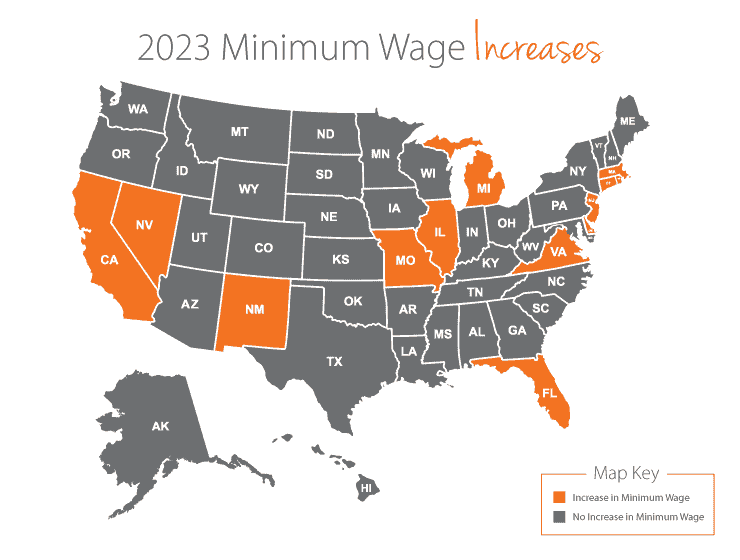Over the last year, historically robust wage growth has failed to keep pace with surging inflation, leaving millions of low- and middle-income Americans struggling to make ends meet.

Beginning on January 1, the lowest-paid workers will make up a significant portion of the lost ground.
According to research supplied exclusively to the USA, TODAY by the National Employment Law Project (NELP), a worker advocacy group, twenty-one states and 41 cities and counties are planning to raise their minimum wages on or around January 1.
For the first time, Massachusetts and Washington will join California and much of New York in establishing a $15 hourly wage minimum.
What effect does inflation have on the minimum wage?
Annual minimum wage rises often provide the highest raises to workers in states or municipalities as part of a planned sequence of bumps over several years.
Other states raise their minimum wages by minor amounts, possibly 20 cents to 50 cents an hour, because they are adjusted to annual inflation, averaging 1% to 2% over the previous twelve years.
However, when the U.S. economy reopened following the pandemic, inflation, as measured by the Consumer Price Index (CPI), began to skyrocket in spring 2021, hitting a 40-year peak of 9.1% this past June before falling to a still elevated 7.1% in November.
As a result, many of the 11 states and 31 cities and counties instituting CPI-triggered minimum wage hikes around New Year’s Day will provide considerable raises to workers.
The minimum wage in Arizona will rise from $12.80 to $13.85; in Colorado, from $12.56 to $13.65; and in Maine, from $12.75 to $13.80, all increases of more than 8% based on CPI increases in those states.
Because of inflation indexing, most workers’ basic salary in Seattle will increase from $17.27 to $18.69, the highest among cities.
According to Lathrop, the raises would not provide workers with a cash bonanza but would allow them to keep up with rising prices.
“It will help workers maintain a minimal quality of life,” Lathrop said. “It will save individuals from making difficult choices,” such as buying food or medicine.
Other states offer a modest hike as part of a multi-step increase in the minimum wage. In Delaware, the minimum wage will rise from $10.50 to $11.75; in Illinois, it will climb from $12 to $13; and in Virginia, it will increase from $11 to $12.
Lathrop points out that Nebraska, a Republican-controlled state, hasn’t raised its minimum wage since 2014. The Cornhusker State, on the other hand, will raise its base wage from $9 to $10.50 on January 1, the first of a series of stages that will bring it to $15 by 2026. Last month, voters passed a ballot measure.
What states have a $15 minimum wage?

More states are joining the growing $15-an-hour club. Pay ceilings in Massachusetts will rise to $15 from $14.25 on January 1 and in Washington State to $15.74 from $14.49. Connecticut will expand the contingent to five states in July when the wage level climbs to $15 from $14.
Delaware, Florida, Illinois, Maryland, New Jersey, Rhode Island, Virginia, and Nebraska will join the $15 faction by 2026. Hawaii will arrive by 2028. That’s 14 states, with around 41% of the U.S. workforce earning or nearing $15 per hour.
Another 36 cities, including more than a dozen in California, Denver, Minneapolis, and Seattle, are already at $15 and will surpass it in less than two weeks.
Read Also: Who is Laurel Waghorn? Everything you need to know

